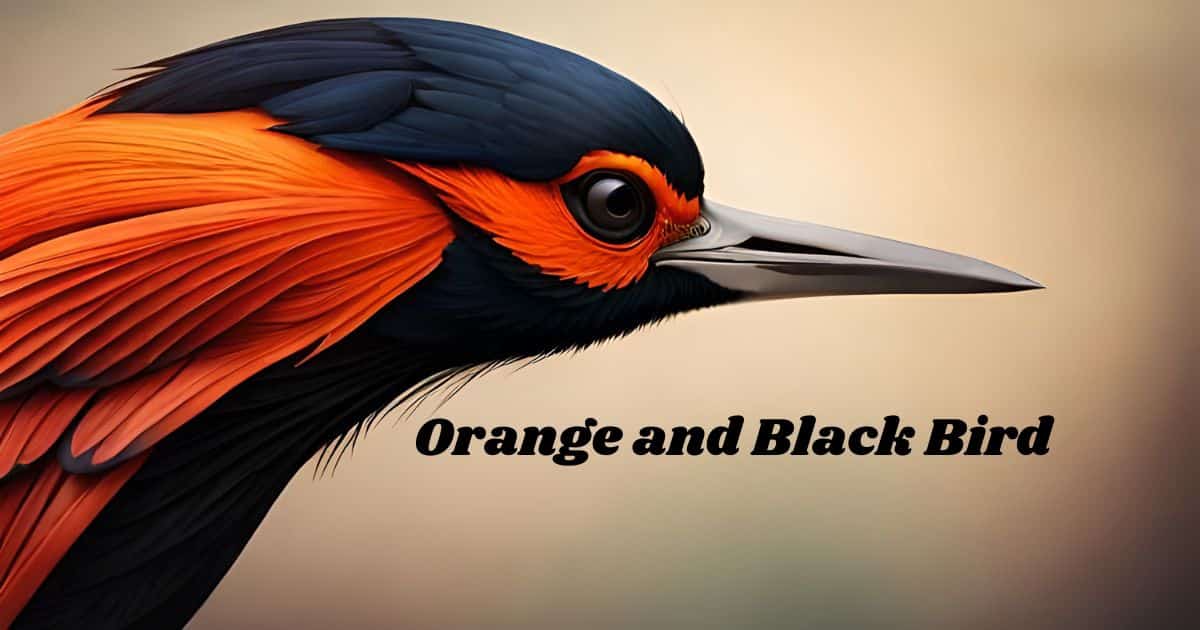The Bold Contrast: Unveiling the Allure of Orange and Black Birds. Nature’s palette is an endless source of wonder, with each color contributing to the fascinating world of avian diversity. Perhaps none are more mesmerizing than the birds that display the dramatic fusion of orange and black in their plumage. These remarkable creatures, with their daring color combination, continue to enchant bird enthusiasts, nature lovers, and casual admirers across the globe.
Identifying the Iconic Orange and Black Bird
Among the most distinguished and easily recognizable orange and black birds is the Red-winged Blackbird (Agelaius phoeniceus). This species, common in North America, has a glossy black body with bright red and yellow epaulettes, visible when perched or flying.
The male Red-winged Blackbird’s remarkable appearance, characterized by its dramatic color contrast, sets it apart in the avian kingdom. Another fascinating orange and black species is the Bullock’s Oriole (Icterus bullockii).
These moderate-sized songbirds, sharing ancestry with blackbirds, are celebrated for their radiant feathers. Mature male Bullock’s Orioles exhibit an impressive black head, back, and wings, complemented by a luminous orange belly, facial area, and tail. Though more subdued, females and juvenile males still showcase an attractive blend of yellow, orange, and black coloration.
The Altamira Oriole (Icterus gularis) represents another spectacular example of the orange and black color combination.Native to Texas and Central America, these songbirds have a black head, back, and wings, with vibrant orange on their face and body.
The Allure of Orange and Black Birds
The magnetic appeal of orange and black birds has consistently captivated bird enthusiasts and nature admirers. The dramatic interplay between the rich, deep black and the vivid, warm orange creates an arresting visual display that commands attention and admiration.
These distinctive color patterns serve crucial purposes in their natural environment.The orange markings on male Red-winged Blackbirds aid in courtship, territorial defense, and provide camouflage or warning signals.
Beyond their evolutionary role, orange and black birds captivate with their beauty, evoking wonder as they glide through the air or rest on branches.
The Diversity of Orange and Black Birds
While the Red-winged Blackbird, Bullock’s Oriole, and Altamira Oriole stand out as prominent examples of orange and black birds, they represent just a fraction of the species that showcase this remarkable color combination. The natural world hosts an impressive variety of avian species that display various proportions of orange and black in their feathers.
Consider the Northern Red Bishop (Euplectes orix), an African native that exemplifies this stunning color palette. These compact, finch-like These creatures have a bright orange head, breast, and rump, contrasting beautifully with their black wings and back. Similarly, the Vermilion Flycatcher (Pyrocephalus rubinus) boasts a vivid red-orange head and underparts, set against its dark wings and back.
The American Redstart (Setophaga ruticilla), a diminutive warbler species, presents its own distinctive interpretation of the orange-black theme. Male Redstarts exhibit glossy black upper parts adorned with vivid orange patches on their wings and tail, creating a mesmerizing display as they navigate through the tree canopy.
These examples merely scratch the surface of the incredible diversity among orange and black birds worldwide, each species possessing unique traits and evolutionary adaptations. The exploration of these magnificent creatures offers endless fascination for bird enthusiasts and nature lovers.
Conservation Efforts and Threats
Despite their captivating appearance, many orange and black bird species face mounting challenges to their survival. The expansion of urban areas, destruction of natural habitats, and environmental deterioration pose significant threats to these bird populations. The Altamira Oriole faces challenges in Texas’s Rio Grande Valley due to extensive development reducing natural habitats.
The preservation and restoration of these vital ecosystems demand urgent attention to ensure these species’ continued existence. The Northern Red Bishop presents a different conservation challenge, having established breeding populations in certain U.S. regions following captive escapes.While these introduced populations thrive, they raise concerns about ecosystem impact and future introductions, requiring careful monitoring.
Bird enthusiasts can support conservation by documenting sightings, participating in citizen science, and advocating for habitat protection.
FAQs
Which orange and black bird is the most famous?
The Red-winged Blackbird, found across North America, is the most iconic orange and black bird, with males displaying black plumage and vivid scarlet and yellow wing epaulettes.
What other types of orange and black birds exist?
Other notable orange and black species include Bullock’s Oriole, Altamira Oriole, Northern Red Bishop, and Vermilion Flycatcher.
What makes orange and black birds so visually captivating?
The striking contrast of black and orange creates a stunning display, aiding in mate attraction and deterring predators.
What threats do orange and black birds face?
These magnificent species confront numerous challenges, primarily stemming from habitat destruction, increasing urbanization, and environmental deterioration. Conservation initiatives play a vital role in safeguarding these birds and their ecosystems.
How can I contribute to the conservation of orange and black bird species?
Bird enthusiasts can aid conservation by documenting sightings, joining citizen science projects, and promoting habitat protection, making a meaningful impact.





